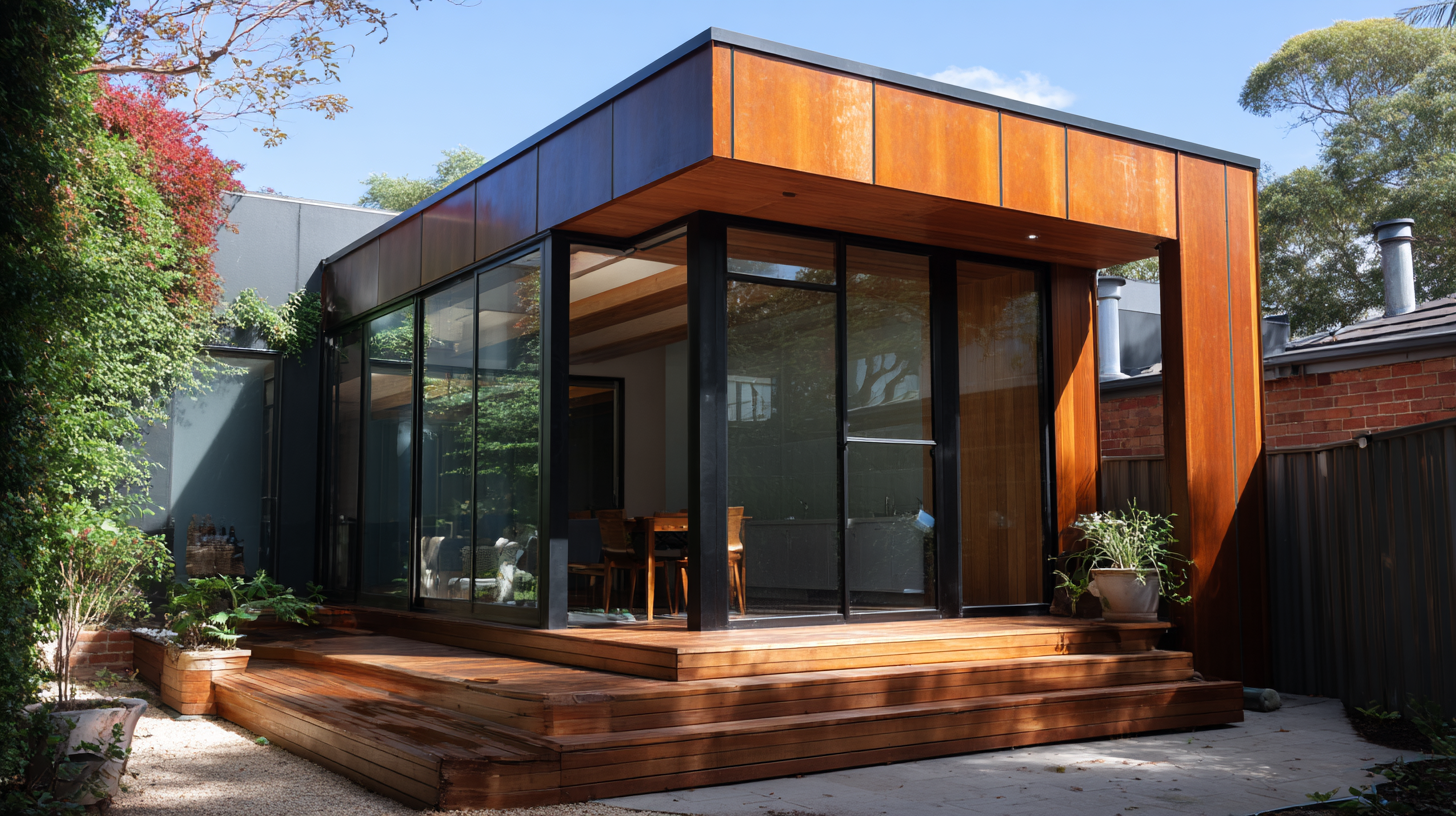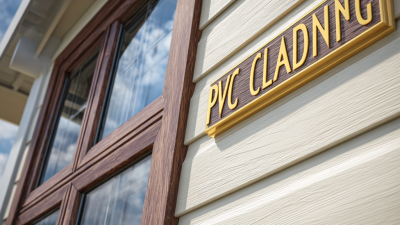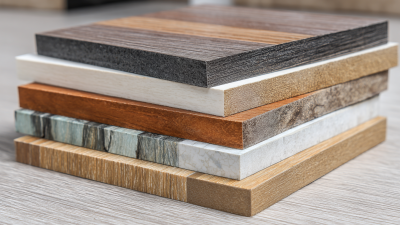Leave Your Message
-
Facebook
-
Whatsapp
-
Whatsapp


 In the ever-evolving landscape of modern home design, innovative materials play a crucial role in enhancing aesthetics and functionality. Among these, Plastic Cladding Sheets have emerged as a versatile and sustainable option, transforming the way architects and designers approach exterior and interior finishes. According to a report by Statista, the global market for plastic construction materials is projected to reach $455 billion by 2027, highlighting the growing demand and acceptance of plastics in building applications.
These sheets not only offer an array of design possibilities—from vibrant colors to textures mimicking natural materials—but also provide durability, lightweight characteristics, and moisture resistance. This makes them an ideal choice for both new constructions and renovations. As home design trends continue to lean towards environmentally friendly and cost-effective solutions, exploring the innovative uses of Plastic Cladding Sheets becomes essential for creating modern, stylish, and sustainable living spaces.
In the ever-evolving landscape of modern home design, innovative materials play a crucial role in enhancing aesthetics and functionality. Among these, Plastic Cladding Sheets have emerged as a versatile and sustainable option, transforming the way architects and designers approach exterior and interior finishes. According to a report by Statista, the global market for plastic construction materials is projected to reach $455 billion by 2027, highlighting the growing demand and acceptance of plastics in building applications.
These sheets not only offer an array of design possibilities—from vibrant colors to textures mimicking natural materials—but also provide durability, lightweight characteristics, and moisture resistance. This makes them an ideal choice for both new constructions and renovations. As home design trends continue to lean towards environmentally friendly and cost-effective solutions, exploring the innovative uses of Plastic Cladding Sheets becomes essential for creating modern, stylish, and sustainable living spaces.
Plastic cladding sheets have emerged as a versatile material in modern interior design, offering both aesthetic appeal and practical benefits. One creative approach is to use these sheets as statement walls. By covering a section of a room with textured or patterned cladding sheets, homeowners can infuse their space with personality and depth. This not only serves as a visual focal point but also helps control acoustics and adds a layer of insulation.
In addition to accent walls, plastic cladding sheets can be creatively utilized in kitchen and bathroom designs. For instance, using waterproof cladding sheets in these areas can enhance durability while allowing for a wide range of colors and finishes. By incorporating vibrant cladding sheets as a backsplash or countertop surface, spaces can be transformed into innovative and functional areas that resist moisture and stains. Such applications not only elevate the style of these rooms but also simplify maintenance, making plastic cladding a smart choice for contemporary home design.
Plastic cladding sheets are emerging as an innovative choice for transforming outdoor spaces, offering both aesthetic appeal and practical solutions. By incorporating these materials, homeowners can easily revamp bare walls, making them engaging focal points. According to recent industry reports, the use of colorful cladding can enhance the visual appeal of a garden or patio, allowing for creative expressions that resonate with personal style. Utilizing plastic sheets for wall decor can result in maintenance-free options that withstand weather elements while adding a modern touch to traditional outdoor settings.
In the realm of budget-friendly garden ideas, plastic cladding sheets stand out for their versatility. For example, integrating cladding into a DIY project for a garden shed can simplify installation and provide a seamless look. This material can be creatively combined with climbing plants or bold paint colors, providing an eco-friendly backdrop that breathes life into otherwise plain areas. Studies indicate that such enhancements can increase property value by up to 15%, underscoring the potential return on investment for homeowners looking to elevate their outdoor aesthetics without overspending. Embracing plastic cladding not only transforms outdoor spaces but also creates areas perfect for outdoor gatherings or peaceful retreats.

Plastic cladding sheets are emerging as a forward-thinking choice for sustainable home renovations. These versatile materials not only enhance the aesthetic appeal of a home but also contribute to energy efficiency and environmental sustainability. Made from recyclable materials, plastic cladding sheets offer a long-lasting and low-maintenance option that aligns perfectly with eco-friendly renovation goals. Their resistance to moisture and pest damage further extends the lifespan of buildings, allowing homeowners to invest in materials that promote durability while reducing waste.

In addition to their practical benefits, plastic cladding sheets can be utilized in innovative ways to personalize living spaces. Available in various textures, colors, and finishes, they enable architects and designers to create unique exterior facades or interior accents that reflect the homeowner's style. By integrating these sheets into renovation projects, designers can embrace a modern aesthetic that combines functionality with artistic expression, creating homes that are not only sustainable but also visually striking. As homeowners continue to seek environmentally friendly solutions, plastic cladding sheets stand out as a key material in the evolution of contemporary home design.
Plastic cladding sheets are transforming modern home design, offering not only durability but also a vast array of color and texture options that enhance the aesthetic appeal of any property. Research from the American Institute of Architects indicates that homeowners increasingly prioritize innovative materials that blend functionality with visual appeal, leading to a 30% increase in the use of cladding materials in new constructions and renovations over the past five years. With these sheets, designers can achieve striking finishes that mimic traditional materials like wood or stone, without the associated maintenance costs.
For homeowners considering plastic cladding, it's essential to explore the different color options available. Lighter shades can make a space feel more open and airy, while darker hues can add a sophisticated touch. Additionally, incorporating textured sheets can create depth and interest. Be sure to consider the surrounding environment; for instance, earthy tones can harmonize beautifully with nature.
**Tip:** When selecting color and texture, always request samples to see how they interact with natural light at different times of day.
Moreover, the versatility of plastic cladding allows for creative applications such as feature walls or accents that draw the eye. With over 70% of architects citing the importance of sustainable materials in their projects, plastic cladding becomes an attractive choice that fulfills both aesthetic and environmental goals.
**Tip:** Focus on UV-resistant options to maintain color vibrancy over time and ensure longevity in your design.
| Application Area | Color Options | Texture Options | Durability | Maintenance |
|---|---|---|---|---|
| Exterior Walls | Matte Black, Ocean Blue, Earthy Green | Smooth, Textured, Wood Grain | 10-15 years | Low |
| Roofing | Slate Gray, Rust Red | Corrugated, Flat | 15-20 years | Moderate |
| Indoor Wall Panels | Soft White, Pastel Colors | Embossed, Smooth Finish | 5-10 years | Very Low |
| Fencing | Forest Green, Beige | Veneer, Textured | 10-15 years | Low |
| Garden Sheds | Charcoal, Sunflower Yellow | Ribbed, Panelized | 8-12 years | Low |
The integration of plastic cladding into furniture and decorative elements is a growing trend in modern home design, showcasing innovative applications that champion sustainability. One vivid example is the use of 900 discarded plastic chairs to create an eye-catching facade for a furniture showroom in the Czech Republic. This approach not only repurposes waste material but also adds a distinctive aesthetic that mirrors the contemporary values of eco-conscious design.
Furthermore, the versatility of plastic cladding extends beyond mere architectural applications; it can be creatively incorporated into various furniture designs. As sustainable practices take center stage, designers are exploring how recycled materials can enhance the functionality and appeal of furnishings. From using recycled plastics to fashion stylish tables and seating options, these innovative designs not only reduce environmental impact but also offer unique, modern aesthetics that resonate with consumers seeking both beauty and responsibility in their home decor.






